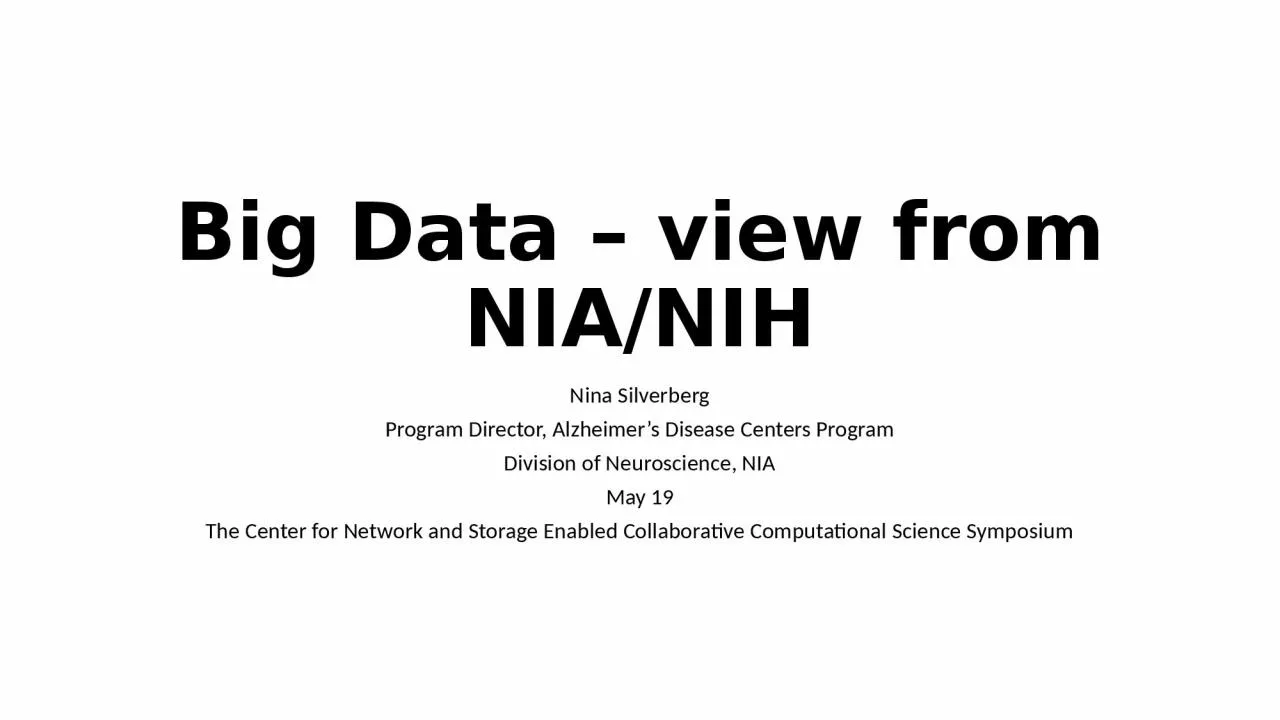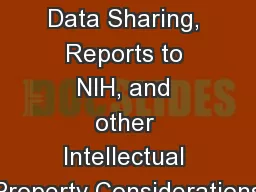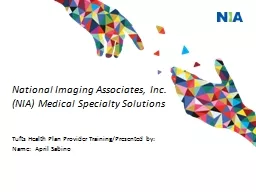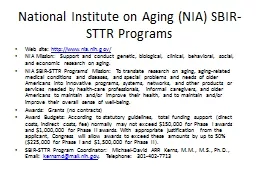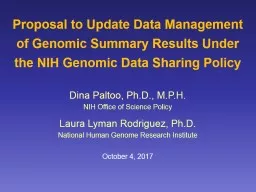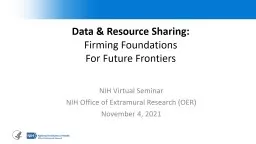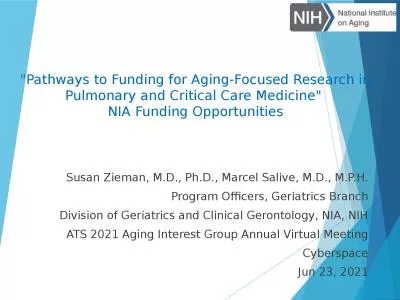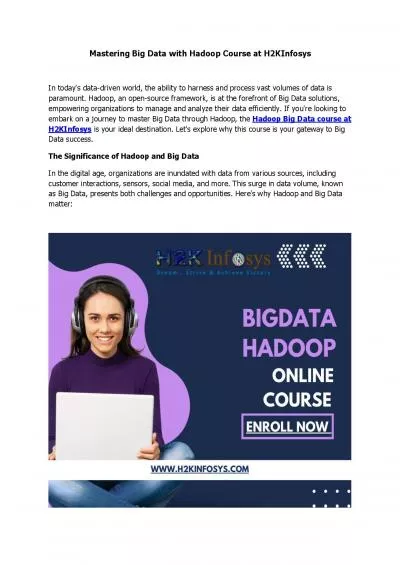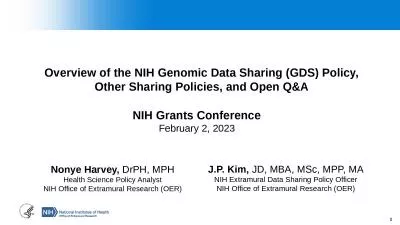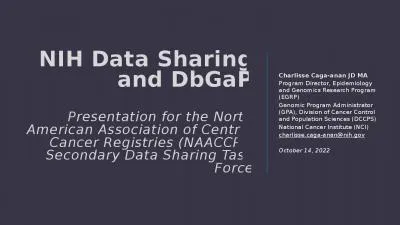PPT-Big Data – view from NIA/NIH
Author : melanie | Published Date : 2024-03-13
Nina Silverberg Program Director Alzheimers Disease Centers Program Division of Neuroscience NIA May 19 The Center for Network and Storage Enabled Collaborative
Presentation Embed Code
Download Presentation
Download Presentation The PPT/PDF document "Big Data – view from NIA/NIH" is the property of its rightful owner. Permission is granted to download and print the materials on this website for personal, non-commercial use only, and to display it on your personal computer provided you do not modify the materials and that you retain all copyright notices contained in the materials. By downloading content from our website, you accept the terms of this agreement.
Big Data – view from NIA/NIH: Transcript
Download Rules Of Document
"Big Data – view from NIA/NIH"The content belongs to its owner. You may download and print it for personal use, without modification, and keep all copyright notices. By downloading, you agree to these terms.
Related Documents

